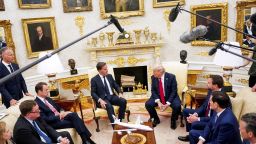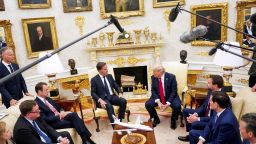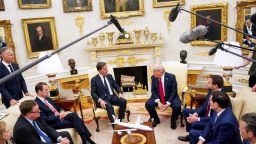Science
New Pentagon Policy May Redirect Billions in Weapons from Ukraine
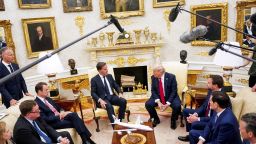
A recent memorandum from the Pentagon’s policy chief introduces a significant shift in U.S. military strategy, allowing the Defense Department to potentially redirect weapons and equipment intended for Ukraine back into American stockpiles. According to four individuals familiar with the memo, this policy could divert billions of dollars designated for the war-torn country, raising concerns about the status of U.S. arms shipments to Ukraine just ahead of a potential meeting between President Donald Trump and Russian President Vladimir Putin.
In a context where the U.S. has previously committed to supporting Ukraine’s defense against Russia, the new policy adds layers of uncertainty. Despite Trump’s approval of a plan to sell U.S. weapons to Ukraine through NATO, internal discussions within the Pentagon reflect hesitance to arm Kyiv at the expense of U.S. military assets. This is particularly true for critical resources like interceptor missiles, air defense systems, and artillery ammunition, which remain in high demand.
Pete Hegseth, the acting Secretary of Defense, recently paused a significant package of weapons shipments to Ukraine, aligning with the directives outlined in the memo authored by Elbridge Colby, the Undersecretary of Defense for Policy. Colby, known for his skepticism regarding military support to Ukraine, included provisions that allow for the diversion of weapons allocated for Ukraine under the Ukraine Security Assistance Initiative (USAI) back into U.S. stockpiles.
The USAI program, established in 2016, has historically provided Ukraine with a consistent supply of military aid. Recently, the U.S. Senate allocated an additional $800 million in funding for USAI as part of the annual National Defense Authorization Act. However, it remains unclear whether the weapons funded through this allocation will ultimately reach Ukraine, given the new Pentagon policy.
Historically, Pentagon officials believed that diverting USAI weapons back into U.S. stockpiles would contravene the Impoundment Control Act. This legislation emphasizes Congressional authority over budgetary matters and mandates presidential notification for any withholding or delay of congressionally authorized funds. In response to the new policy, Senate lawmakers introduced provisions in the proposed NDAA for 2026, stipulating that weapons could only be reabsorbed by the Pentagon if they had not yet been transferred to Ukraine and were no longer needed for ongoing support activities.
As the Trump administration seeks to shift the responsibility of arming Ukraine more squarely onto European allies, Colby has pushed to preserve U.S. military resources for potential conflicts with China. Despite the complexities introduced by the new policy, the Pentagon still has nearly $4 billion in funding authority, authorized by Congress last year, to supply Ukraine with weapons drawn directly from U.S. stockpiles. Some NATO allies, including the United Kingdom, have urged the U.S. to utilize this funding to exert greater pressure on Russia, with proposals for reimbursement of the costs incurred.
The memo categorizes U.S. stockpiles into three tiers: “red,” “yellow,” and “green.” The red and yellow categories consist of munitions deemed in short supply and require explicit approval from Hegseth before deployment. Notably, interceptor missiles for Patriot air defense systems are classified within the red category. The paused shipment package included numerous interceptors, but following Trump’s intervention, Hegseth resumed their transfer.
Ukrainian officials have consistently downplayed U.S. concerns about diminishing stockpiles, a sentiment echoed during the Biden administration when similar justifications were made for withholding certain military support. The demand for advanced U.S.-made air defense systems, particularly the Patriot system, has intensified as Russia escalates its aerial assaults on Ukraine. In July alone, the Ukrainian Air Force reported a record launch of 6,443 drones and missiles from Russia.
In tandem with these developments, the Pentagon is collaborating with NATO to create a new system for selling weapons to European allies, who would then supply Ukraine. This initiative would establish a NATO fund into which allies can deposit funds for the purchase of U.S. weapons. Trump recently referenced this approach, highlighting that NATO allies would cover the costs while the U.S. would manufacture the weapons.
Under this mechanism, Ukraine would provide a wishlist of needed equipment directly to NATO. U.S. General Alexus Grynkewich, who oversees both U.S. European Command and NATO military operations, would assess whether sufficient stockpiles exist before seeking European partners to fulfill the requests. Reports indicate that NATO allies aim to establish an initial investment of $10 billion for this account, with over $1 billion already pledged for arming Ukraine.
While the Pentagon’s new policy complicates the future of U.S. military aid to Ukraine, NATO’s collaborative efforts may provide alternative avenues for support. As European nations expedite the delivery of their own military supplies to Ukraine, they anticipate reimbursement from the U.S., although uncertainties remain regarding the implementation of the Colby policy and its potential impact on ongoing military support efforts.
-

 Lifestyle3 weeks ago
Lifestyle3 weeks agoBelton Family Reunites After Daughter Survives Hill Country Floods
-

 Technology3 weeks ago
Technology3 weeks agoDiscover the Top 10 Calorie Counting Apps of 2025
-

 Education4 weeks ago
Education4 weeks agoWinter Park School’s Grade Drops to C, Parents Express Concerns
-

 Technology2 weeks ago
Technology2 weeks agoHarmonic Launches AI Chatbot App to Transform Mathematical Reasoning
-

 Technology4 weeks ago
Technology4 weeks agoMeta Initiates $60B AI Data Center Expansion, Starting in Ohio
-

 Technology4 weeks ago
Technology4 weeks agoByteDance Ventures into Mixed Reality with New Headset Development
-

 Lifestyle4 weeks ago
Lifestyle4 weeks agoNew Restaurants Transform Minneapolis Dining Scene with Music and Flavor
-

 Technology3 weeks ago
Technology3 weeks agoMathieu van der Poel Withdraws from Tour de France Due to Pneumonia
-

 Technology3 weeks ago
Technology3 weeks agoRecovering a Suspended TikTok Account: A Step-by-Step Guide
-
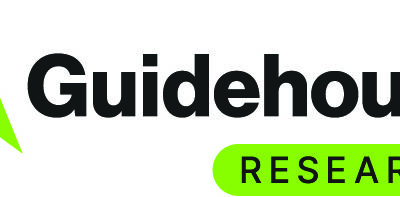
 Technology3 weeks ago
Technology3 weeks agoGlobal Market for Air Quality Technologies to Hit $419 Billion by 2033
-

 Health4 weeks ago
Health4 weeks agoSudden Vision Loss: Warning Signs of Stroke and Dietary Solutions
-

 Technology4 weeks ago
Technology4 weeks agoTrump Faces Internal Struggles Over Epstein Files Handling







